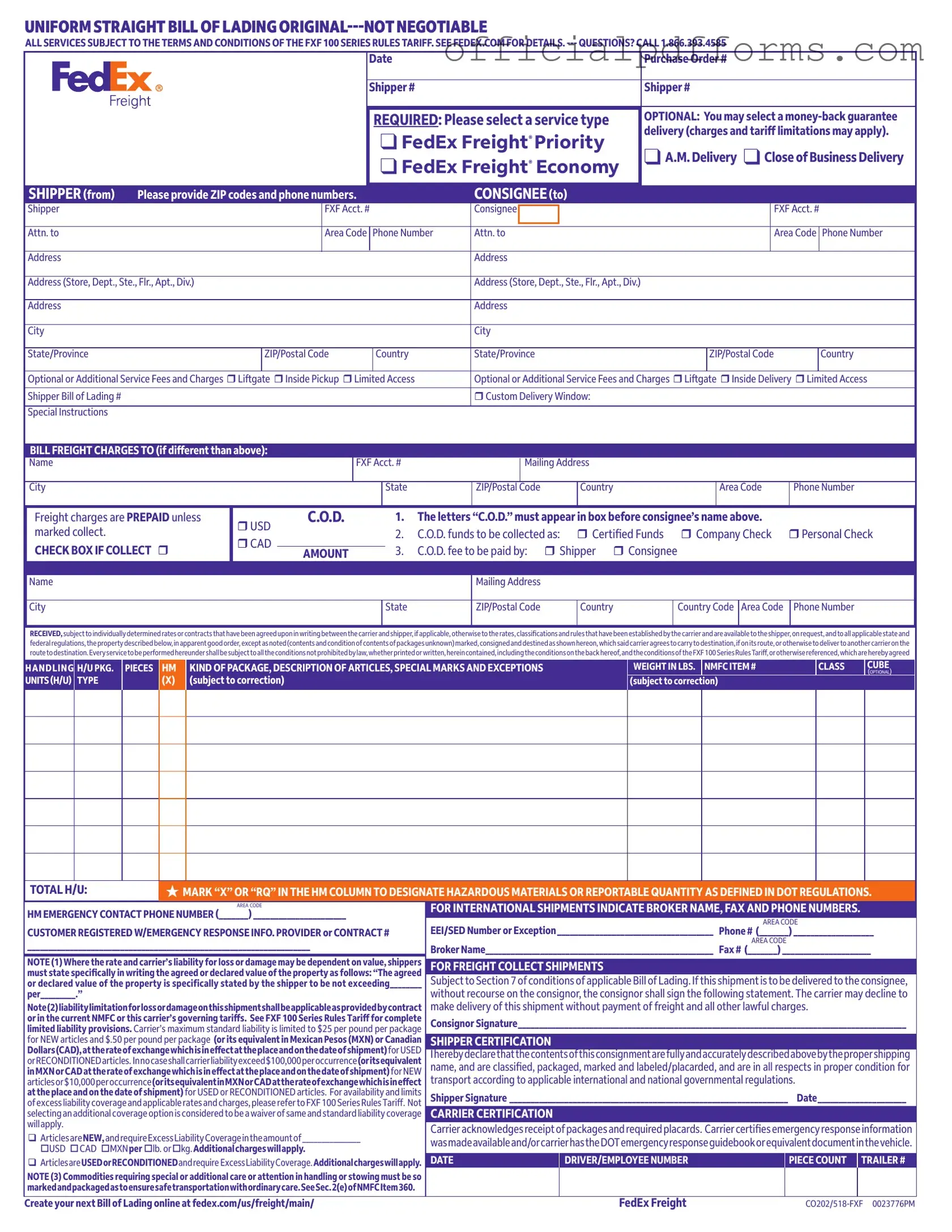What is a FedEx Bill of Lading?
The FedEx Bill of Lading (BOL) is a crucial shipping document that serves as a contract between the shipper and the carrier. It outlines the details of the shipment, including the sender, recipient, and the items being transported. This document also provides proof of receipt for the carrier and can be used for tracking purposes.
Why do I need to fill out a Bill of Lading?
Filling out a Bill of Lading is essential for several reasons:
-
It ensures that all parties involved in the shipment have a clear understanding of the terms and conditions.
-
It acts as a receipt for the goods being shipped.
-
It helps in tracking the shipment throughout its journey.
When filling out the FedEx Bill of Lading, you need to provide the following information:
-
Shipper and consignee details, including names, addresses, and contact numbers.
-
Service type selected (e.g., FedEx Freight Priority or Economy).
-
Details about the shipment, such as weight, dimensions, and description of the items.
-
Any optional services needed, like liftgate or inside delivery.
What are the payment options for freight charges?
Freight charges can be prepaid or collected at delivery. If you choose to have the charges prepaid, you must indicate this on the Bill of Lading. If you select C.O.D. (Cash on Delivery), you will need to specify the payment method, such as certified funds or a company check.
What should I do if I am shipping hazardous materials?
If you are shipping hazardous materials, you must mark the appropriate box on the Bill of Lading and provide detailed information about the materials. This includes emergency contact information and compliance with DOT regulations. Proper labeling and documentation are crucial for safety and legal compliance.
What happens if there is damage or loss during shipping?
In the event of damage or loss, the liability of the carrier is limited to specific amounts, depending on the type of goods being shipped. For new articles, the liability is typically $25 per pound per package. It’s essential to declare the value of the shipment if it exceeds standard liability limits, as this may require additional coverage.
Can I make changes to the Bill of Lading after it has been submitted?
Once the Bill of Lading has been submitted, making changes can be challenging. It’s best to review all information carefully before submission. If you need to make changes, contact FedEx customer service as soon as possible to see what options are available.
For detailed information about the terms and conditions related to your shipment, you can visit the FedEx website at fedex.com. The FXF 100 Series Rules Tariff outlines all relevant regulations and charges associated with your shipment.
